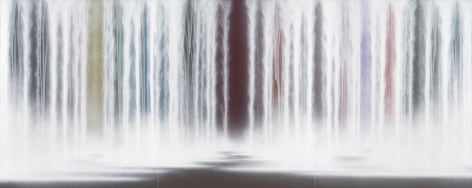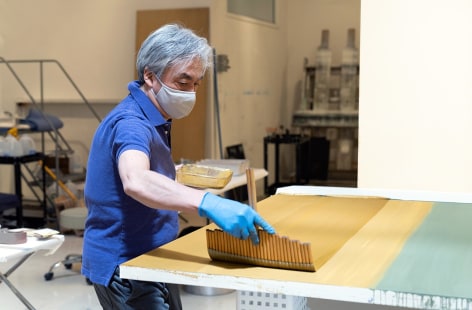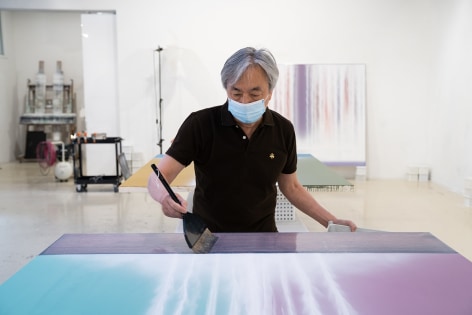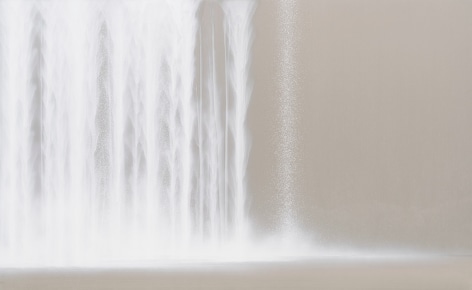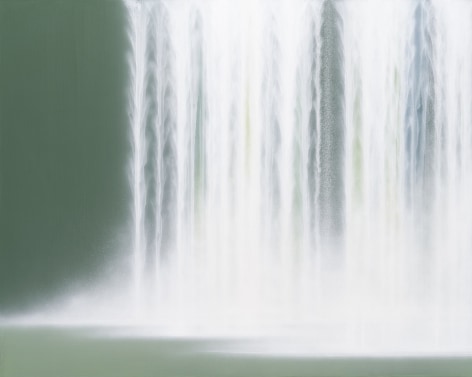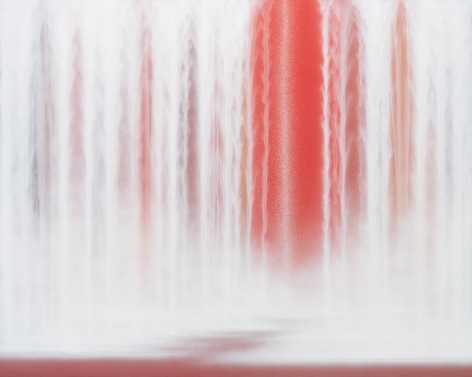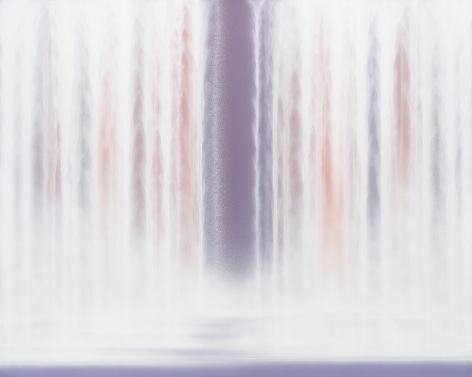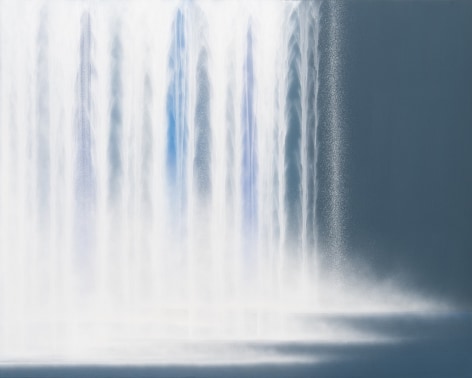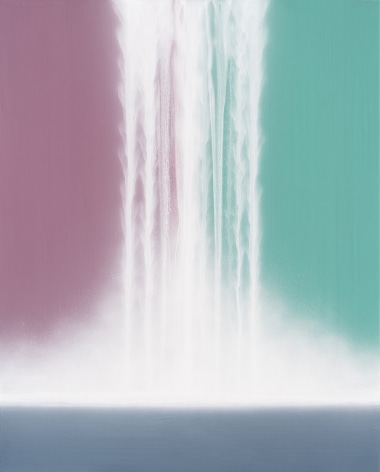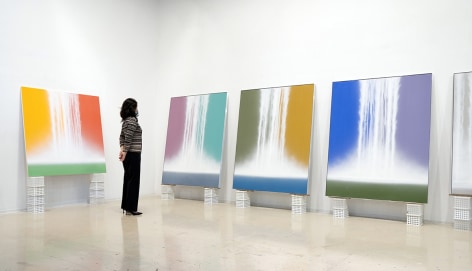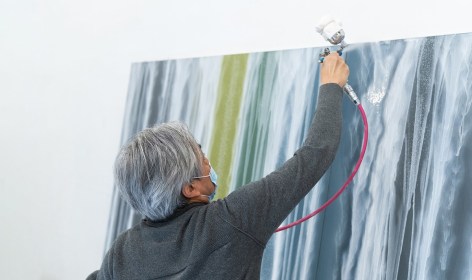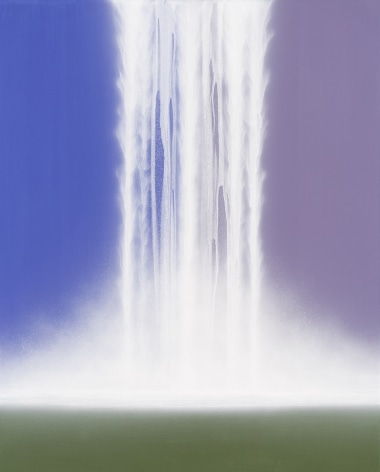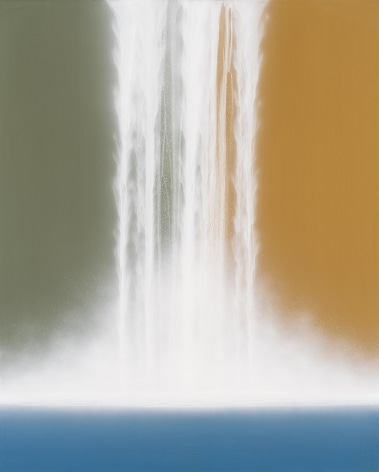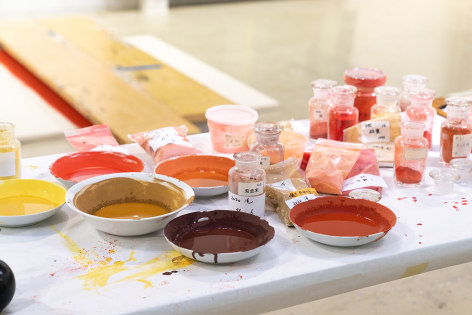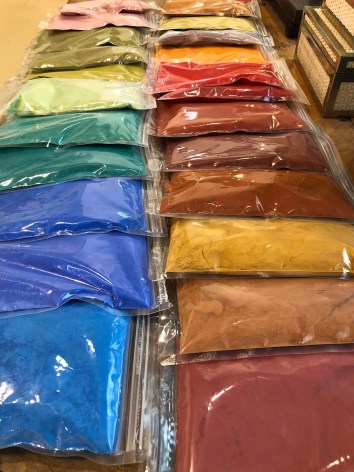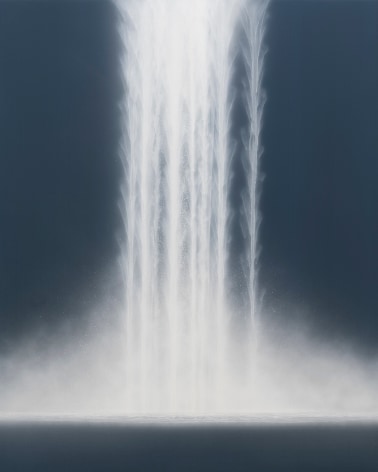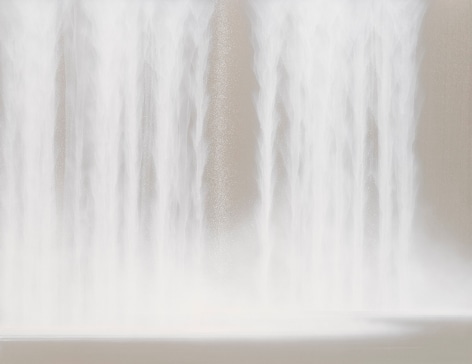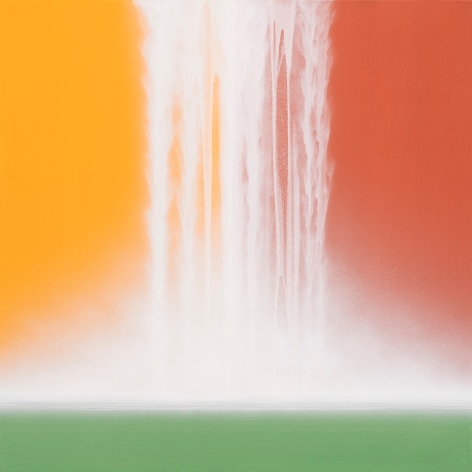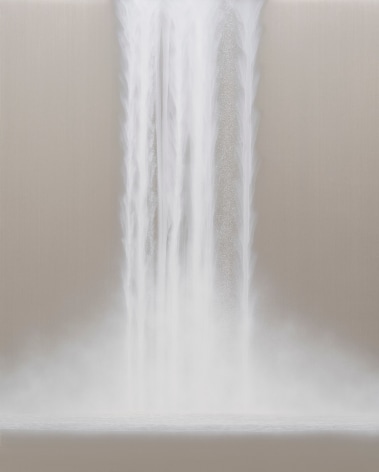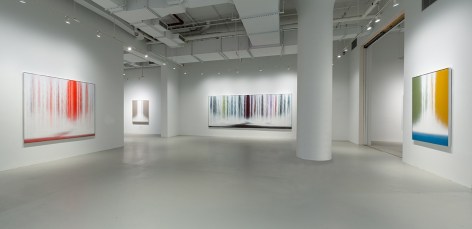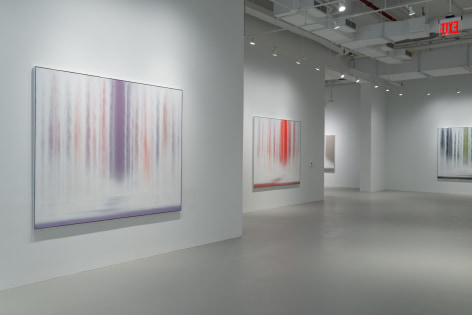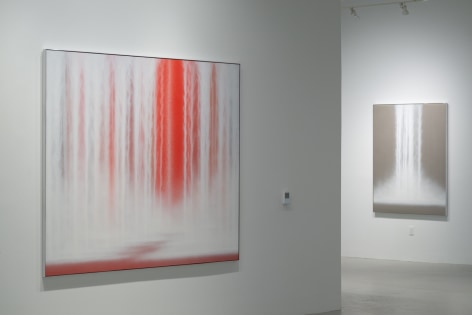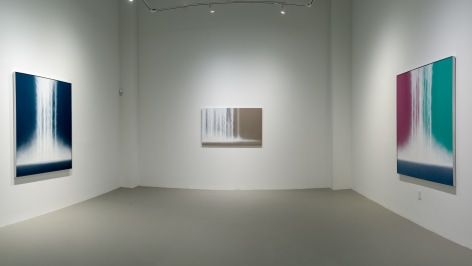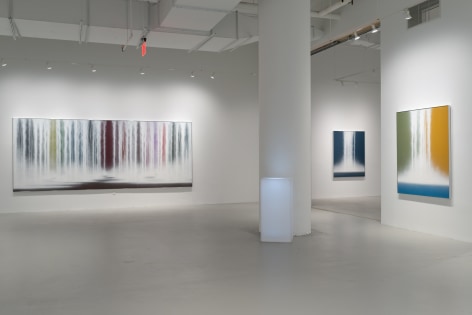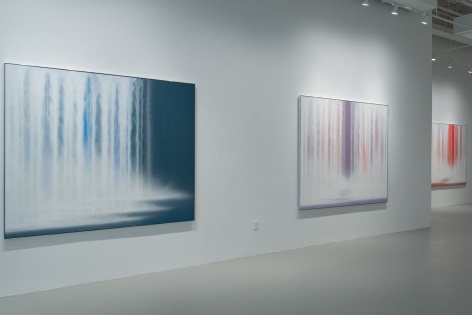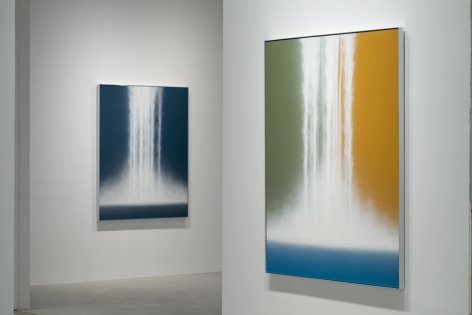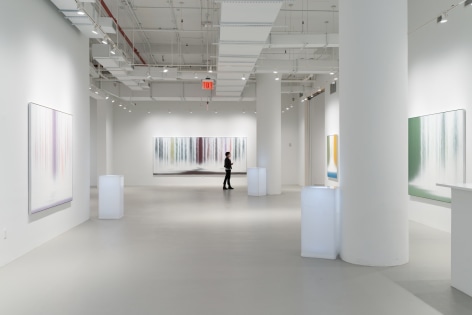
New York, November 16, 2021—Sundaram Tagore is pleased to present a new collection of Waterfall paintings by Hiroshi Senju. For the first time, the artist takes us behind his cascading curtains of water, directing our gaze toward the beauty of the natural world that lies beyond. The exhibition marks the opening of our newly expanded 7,000-sq.ft. Chelsea Gallery at 542 W. 26th Street.
Hiroshi Senju has been conveying in paint nature’s power and ability to inspire awe for more than 30 years. He began exploring the waterfall image in the 1990s and today, they are in public spaces and museum collections worldwide, including those of The Metropolitan Museum of Art, New York, the Los Angeles County Museum of Art and the Art Institute of Chicago, where a site-specific Waterfall is on view in a gallery designed by Tadao Ando through March 13, 2022.
Senju’s falls are often inspired by natural landscapes, including the rugged, almost prehistoric terrain of northern Oahu, where cascades of water flow over ancient cliffs (Beginnings, 2020). However, this new body of work is a pure expression of the artist’s unfettered imagination, a visually resplendent response to working in isolation at his New York studio throughout 2020.
To capture the spectrum of color he had conjured in his mind for this series, Senju turned to manmade pigments, in addition to the bespoke natural pigments he traditionally uses. Produced in Japan, these pigments are derived from colored glass composed of high-fired glaze and metal oxide and are made using the same care and exacting standards as his natural pigments.
Although Senju is widely known for his black-and-white Waterfalls, his skill as a colorist is clearly evident in this body of work, particularly in a suite of four paintings in which nuanced shifts in tone and shade not only evoke the sensation of falling water, but the essence of the changing seasons. “When you see the world from the inside of a waterfall, the soft hues of spring flowers will be seen through the falling water as a field of colors,” he says. “In the same way, summer is the harmony of various greens. Autumn is the color of leaves that become more brilliant just before they fall. In winter, there may be a sense of loneliness after everything has fallen, yet at the same time, there is a feeling of renewal.”
In the central work of the show, pictured above, the artist brings together the colors from the four seasons in a sweeping, multi-panel panorama. In this Waterfall, liquid ribbons of red, gold, purple, blue and green appear between towering columns, as if a mist of water droplets is fracturing the light into a spectrum of color like a prism. At the base of the waterfall, the colors coalesce into a deep, blue-black pool that alludes to the depth below the surface.
Senju’s color explorations also include a small group of Waterfalls that are more distilled. In these works, the waterfall is centered between three distinct color fields. The relationship between the pair of colors in the background strikes a beautiful balance, yet it’s the inclusion of the third color in the foreground that introduces an unexpected harmony. When selecting the combinations, rather than draw on a specific theme, Senju relied on instinct. “The colors called for one another,” he says.
Rounding out the range of colors and mediums are three luminous, warm gray Waterfalls made with platinum pigment, a material Senju began using in 2020. He delights in its refined yet understated nature, in which the platinum’s luster plays off the soft white oyster-shell pigment used to articulate the waterfall itself.
Senju purposefully included these subtle, monochrome paintings in this new body of work not as a foil to the more colorful works presented alongside them, but as a way to encourage viewers to see the beauty in diversity and in the world as it is.
ABOUT HIROSHI SENJU
Senju was the first Asian artist to receive an Honorable Mention Award at the Venice Biennale (1995), and has participated in numerous exhibitions including The New Way of Tea, curated by Alexandra Munroe, at the Japan Society and the Asia Society in New York, 2002; Paintings on Fusuma at the Tokyo National Museum, 2003; and Frontiers Reimagined at the 2015 Venice Biennale. He was recently awarded the Foreign Minister’s Commendation from the Japanese government for contributions to art. In 2017, he was honored with the Isamu Noguchi Award and in 2021, he was awarded the 77th Imperial Prize and the Japan Art Academy Prize from the Japan Art Academy.
Public installations include seventy-seven murals at Juko-in, a Zen Buddhist temple in Japan, and monumental waterfalls at Tokyo International Airport (Haneda). The Benesse Art Site of Naoshima Island houses two large-scale installations. Most recently, two monumental paintings commissioned by the Kongobuji Temple at Koyasan, a UNESCO World Heritage site, were on view in major museums throughout Japan prior to their installation and consecration in October 2020.
Senju’s work is in The Metropolitan Museum of Art and Brooklyn Museum, New York; the Los Angeles County Museum of Art and the Museum of Contemporary Art, Los Angeles; the Art Institute of Chicago; the Asian Art Museum, San Francisco; the Nelson-Atkins Museum of Art, Kansas City, Missouri; the Royal Ontario Museum, Toronto; the Museum of Modern Art, Toyama, Japan; the Yamatane Museum of Art, Tokyo; Tokyo University of the Arts; and the Kushiro Art Museum, Hokkaido. In 2009, Skira Editore published a monograph of his work titled Hiroshi Senju. The Hiroshi Senju Museum Karuizawa in Japan opened in 2011.
Born in Tokyo, 1958 | Lives and works in New York

